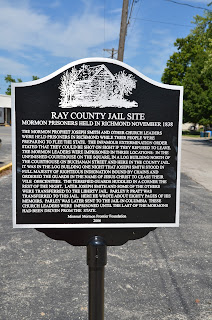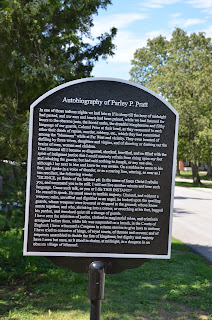Julia Wilson (Memmott)
4th Great Grandmother
Birth Date: 11 Jun 1819
Birth Place: Whiston, Yorkshire, England
Parents: James Wilson and Martha Wilkinson
Death Date: 26 Aug 1898
Death Place: Scipio, Millard, Utah
Birth Place: Whiston, Yorkshire, England
Parents: James Wilson and Martha Wilkinson
Death Date: 26 Aug 1898
Death Place: Scipio, Millard, Utah
Family line: Max Frampton---Verle Ivie---James Ammon Ivie---Martha Ann Memmott---Julia Wilson (Memmott)
Julia Wilson, daughter of James Wilson and Martha Wilkinson, was born at Conklin Mill, Yorkshire Co., England, June 11, 1819. She was christened July 4, 1819 by B. Birkett, curatae in the Parish of Wiston, (No. 1611, pagae 19) County of York. She received a copy of this in 1859 from Richmond Chambers, curate of Wiston.
When she was 8 years old, she went out to work tending children, two girls and a boy of a wealthy landowner. She worked here for quite a few years. Then one year when they were holding a big celebration at the time of a hunt, they ran out of pies. Julia offered to make some for them, and they were so well pleased with the pies that she was given a job as cook, which position she held until the man went broke. Many years later, after she was married, this once wealthy man and his daughter hired her to cook their dinner each day, for which she received their rent, coal, candles and soap, which was a big help to the young family.
When she was 15 years old, her father, who was delivering flour for the Conklin Mill with a one-horse cars, was killed by his own cart.
When she was 19 years old, she, with 5 other girls and 6 boys, took a nurses course for a chance to be a doctor for Queen Victoria of England. Dr. Davis, who later joined the church and came to Manti, won out and became the Queen's doctor. When asked if he remembered Julia Wilson, he said, "That I do, and I had to work like a Britian to beat her." Later, Julia took a dressmaking course, and while sitting in an upstairs window sewing, fell out and caused one of her eyes to become crossed.
She married John Memmott Mar. 161846. (found in a little book with other family dates of John's mother). Their first child Sarah (Probert) was born in 1847. She joined the Church of Jesus Christ of Latter Day Saints, one year after her husband and was baptized Oct. 28, 1849 by Elder Dan Linday.
They went to the Endowment House in Salt Lake City Nov. 14, 1862.
While President Joseph F. Smith was in England on a mission, he was at their home many times. Being quite young, he used to like to go into the kitchen with Sister Memmott and the children. The children ate bread and trachea. He asked Sister Memmott what this trachea was and found out it was what we in America call Molasses. So after that, he had many a piece of bread and treachea with the children.
On April 22, 1855, she and her husband and five children, Sarah, Martha, Thomas, John Alma and Anna Laura left England to join with the Saints in Utah. None of her father's family joined the church except her sister Ann, who married John's brother, William Memmott. Some of her brothers were very bitter, and would not go to see her off when she left England. However, they all became quite friendly later except her sister, Bessie.
She never was a very strong woman so the trials and hardships of the trip and the new country were very hard on her physically.
May 22, 1855, just a month after they left England, they landed in New York. While her husband was in town on business, the boat went off and left him and he didn't overtake them until they were in St. Louis. You can imagine how she felt in a strange country among strangers, alone with five small children (the oldest 8 years old) and the anxiety of not knowing where her husband was or what the trouble was. On arriving at St. Louis, Julia and the children were pretty well upset over leaving their husband and father behind. Her uncle who lived in St. Louis assured them that John would come on the next boat, and he did. This was John's mother's brother, Charles Wilden. Julia's family visited with them for a short while and then started on.
At Atchison, Missouri the children took cholera and on June 26th, 1955 John Alma, nearly 3 years old, died. About a month later, July 23, 1855 at Mormon Grove near Atchison, their baby girl, Anna Laura, died. Both children were buried there. Martha Ann was very seriously ill at the same time, but recovered after being administered to by the elders. It seemed she never quite got over leaving those little ones out in the desert.
When they arrived in Utah, they passed through Round Valley and went on to Cedar City to live as a cousin of Julia's, Elliot Wilden was living there. Here on Oct. 22 1856, James Ammon was born. Julia never was very strong and the hardships of this frontier life was almost more than she could stand.
They moved to Beaver from Cedar City. While here one winter, they had to eat bran bread entirely. Julia couldn't eat it and nearly starved. A good neighbor, Bro. Polyick, had a little white flour and gave them enough for her to eat until harvest. She never forgot him nor his kindness. As soon as the wheat began to ripen, her husband picked some of the first ripe heads off, cleaned it and carried it on his back three miles to the mill so that she could have some bread she could eat.
Her training as a nurse and dressmaker and cook was a big help to her in her pioneer life. Although she was not able to go outside her own home too much, her advice and suggestions were a big help to her many friends and neighbors.
They moved to Round Valley (or Robinsville as it was then called) in March, 1861. In 1866 her husband died quite suddenly and she was left alone with her children. James Ammon, the youngest, was only 10 years old. Again her early training came to her rescue. She was an excellent cook, thanks to her many years of training in the home of wealthy Englishmen. She cooked supper for crowds of young people, milked cows, made butter and cheese and did everything she could to help make a living for herself and family.
She was a widow for 32 years. She lived in her own home until a short time before she died when her daughter Martha Ivie took her into her home and cared for her. She died August 26, 1898.













